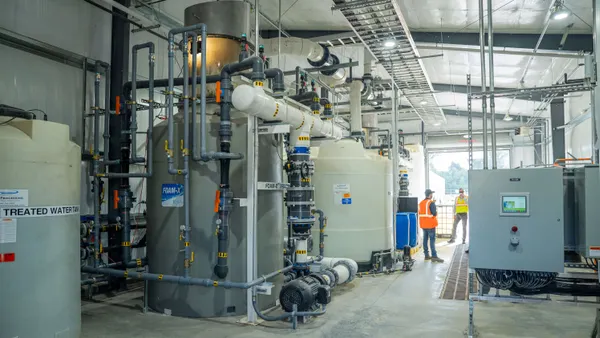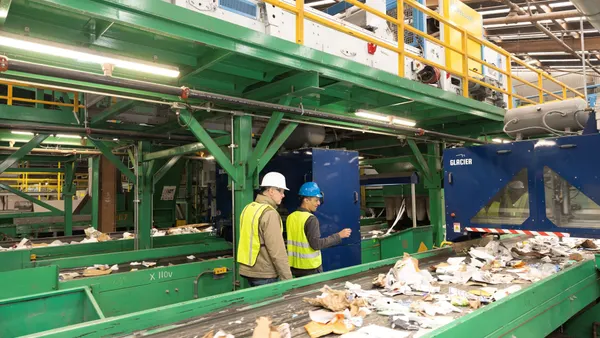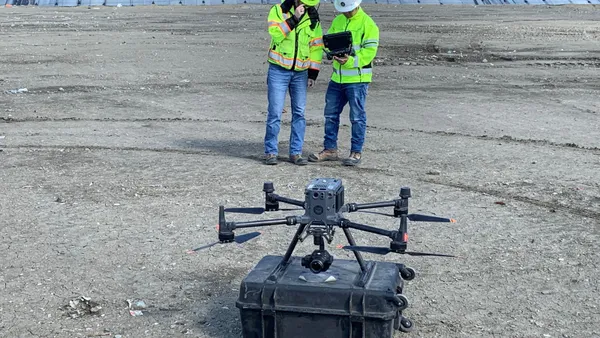Dive Brief:
- Methane gas collection company Qnergy is expanding its work in the landfill gas space with a new pilot project in Weber County, Utah. It's the second landfill gas pilot project for the company, which operates roughly 2,000 of its systems for clients in the oil and gas space.
- The Weber County project, scheduled to come online in September, is expected to produce 5.5 kilowatts of energy per year once operational. Qnergy began a pilot project with Maryland Environmental Services last year at a landfill in Easton, Maryland.
- Qnergy is targeting landfills with low methane content biogas that are often smaller and may fall below U.S. EPA requirements for gas collection. It hopes to bring its solutions to more sites with biogas moving forward.
Dive Insight:
Federal requirements updated in 2021 require existing landfills that emit at least 34 metric tons of non-methane organic compounds per year to install a landfill gas collection and control system. But other smaller landfills, the vast majority of which are run by public entities, are not always required to install such systems. Roughly 1,200 of the 3,450 landfills tracked by the EPA’s Landfill Methane Outreach Program do not have gas collection systems in place, according to the most recent data.
Ory Zik, CEO of Qnergy, said owners and operators of smaller landfills may not be incentivized to install such systems because the cost is prohibitive. Zik said maintenance is a "huge cost driver" for landfill operators and prevents some operators from installing methane capture technology if it’s not needed.
But he pitches Qnergy’s system, which uses a Stirling piston technology that Zik said could operate without maintenance for up to 10 years, as a cost-effective alternative. He hopes that by keeping costs low and providing Qnergy’s remote monitoring software, he can sway more small landfill owners to use the technology. Rather than let methane flare, they can turn it into an economic benefit through electricity generation, he said.
“Most of them don't need to do it legally, they're not forced to do it, but given the economic advantage they would prefer to do it,” Zik said. “The first movers and the early adopters will take advantage of the environmental benefits and carbon credits.”
Weber County closed the landfill now installing Qnergy’s system in 1996, according to EPA data. It then operated a gas-to-energy project in 2005 that was shut down in 2012. Qnergy says its system can achieve "nearly 100% methane destruction" and generate up to 5.5 kilowatts of energy at the Weber County landfill. The company says its Maryland project, at the Midshore I Landfill, can deliver a similar maximum capacity of 5.6 kilowatts.
Qnergy got its start deploying its technology in the natural gas industry. In 2021, TotalEnergies announced an agreement to deploy roughly 400 units of Qnergy's methane capture technology across its Barnett gas field in Texas.
Zik noted there are some differences to his business model in the waste industry. In its landfill agreements, Qnergy expects to drive revenue via operational expenditures from landfill owners and operators, while the oil and gas sector is principally driven by capital expenditure agreements. Qnergy also earns about 10% of its revenue via its remote monitoring software as a service.
Over the next six to 12 months, the company will monitor the pilot and fine-tune Qnergy’s system for landfill gas, after which Zik said he plans to market the services more widely. In addition, the company is exploring the use of its system for on-farm biogas collection through a partnership with a hog farm in Mexico.











